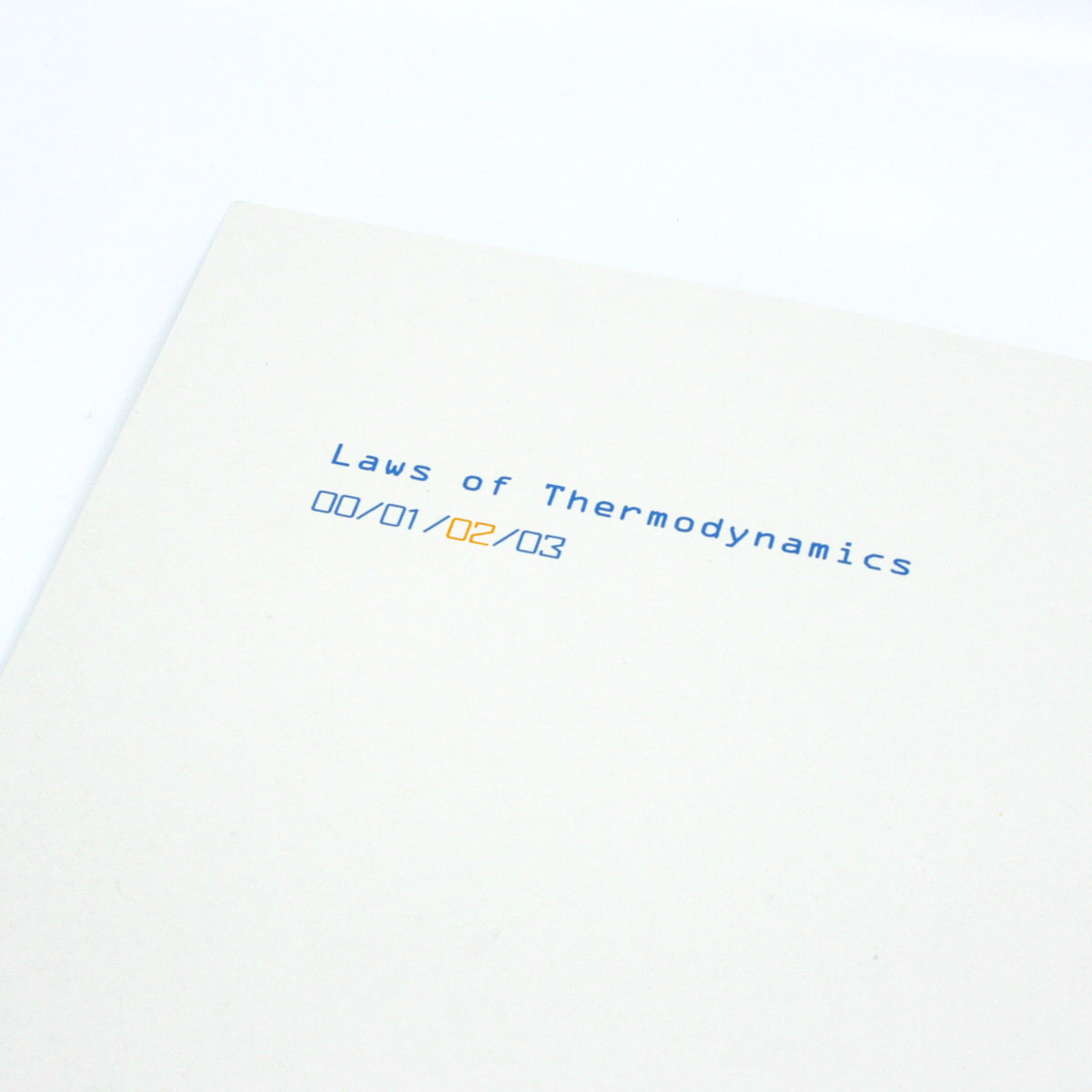Size Chart

Length unit:
Sizes may vary up to 1
HPSL: High Point Shoulder Length
BW: Bust Width (width of shirt measured 1" below armhole)
Couldn't load pickup availability
Thermodynamics is the area of physics that deals with heat energy and how it relates to other kinds of energy. Specifically, it explains how thermal energy is modified to and from other types of energy, as well as how heat can affect matter.
The First Law of Thermodynamics describes how the energy of a thermodynamic system can be neither created nor destroyed. The Second Law describes how thermodynamic systems tend to evolve toward chaotic equilibrium. Like a pessimistic goth friend, the Second Law is all about inefficiency, deterioration and disorder.
According to the Second Law, the more that energy in a system is exchanged or altered, the more energy is wasted, making these processes irreversible. Simply put, the Second Law essentially says, “You can’t unscramble an egg once you’ve scrambled it.”
In practical terms, this part of the law explains that heat energy can’t be completely converted into mechanical energy. Massive gas turbines are highly efficient at converting thousands of degrees of heat into electricity, yet they only release a mild warm breeze that doesn’t contain much thermal energy.
The Second Law also describes how a system moves toward equilibrium. For instance, if a hot object is placed next to a cold object, the hot object doesn’t get warmer and the cold object doesn’t get cooler. In this situation, heat energy flows from the hot item to the cold one until a state of equilibrium is reached.
The Second Law of Thermodynamics largely deals with entropy – the amount of chaos or disorder within a thermodynamic system. With its molecules in a well-ordered crystal lattice, an ice cube has less entropy than a cloud of steam, which has water molecules moving in a highly unpredictable manner.
According to the Second Law, the change in entropy of a system is equal to the amount of heat change divided by the common temperature at the time when heat transfer occurred, or:
dS = δQ/T
The Second Law also says the entropy of an isolated system (our universe) will always remain the same or increase, or:
dS ≥0
This second, unilateral part of the law imposes ‘the arrow of time’ on a thermodynamic system, meaning thermodynamic processes are not completely reversible. Steam from a boiling pan of water cannot form an equivalent block of ice. Hence: You cannot unscramble an egg.
The Second Law of Thermodynamics also has implications for astrophysics, as it predicts that everything in the universe will ultimately be at the same temperature. This ‘heat death’ will occur in the very distant future and it represents the ultimate level of disorder. With everything at the same level of energy, work cannot be done and every atom in the universe will move about at random.
Calculated to occur around 1026 years from now, everything in the universe will ultimately reach a temperature just 10-30 above absolute zero.
Sources:
https://www.livescience.com/50941-second-law-thermodynamics.html
https://www.theguardian.com/science/2013/dec/01/what-is-the-second-law-of-thermodynamics









Our custom frames are made in the USA with the highest standards and archival components. All frames are handcrafted, and will protect your artwork for the long haul.
Each frame is uniquely built by a master framing team, and ships right to your door guaranteed to fit and properly preserve your artwork. All the necessary instructions and hardware for mounting and hanging will be included - all you'll need is a hammer and the right wall space.
Please allow 2 weeks for your framed print to ship.

Join us in making sure that everyone (friends, colleagues, family, and perfect strangers) is working to build public support and political will for the big solutions needed to address climate justice.
Pin Save the Climate donates 50% of profits to climate justice organizations.